Filter by

Natural causes of language: Frames, biases, and cultural transmission
What causes a language to be the way it is? Some features are universal, some are inherited, others are borrowed, and yet others are internally innovated. But no matter where a bit of language is from, it will only exist if it has been diffused and kept in circulation through social interaction in the history of a community. This book makes the case that a proper understanding of the ontology o…
- Edition
- -
- ISBN/ISSN
- 9783944675503
- Collation
- 97 p.; 22 cm.
- Series Title
- -
- Call Number
- 410 ENF f
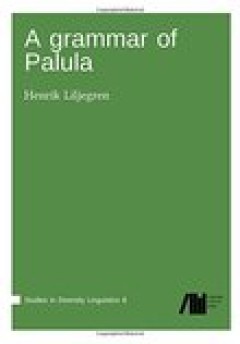
The evolution of case grammar
There are few linguistic phenomena that have seduced linguists so skillfully as grammatical case has done. Ever since Panini (4th Century BC), case has claimed a central role in linguistic theory and continues to do so today. However, despite centuries worth of research, case has yet to reveal its most important secrets. This book offers breakthrough explanations for the understanding of case t…
- Edition
- -
- ISBN/ISSN
- 9783946234333
- Collation
- 252 p.; 22 cm.
- Series Title
- Computational Models of LanguageEvolution 4
- Call Number
- 410 VAN e
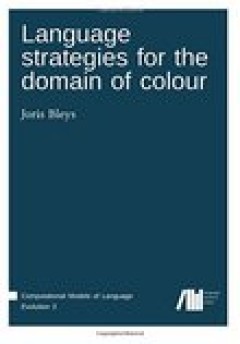
Language strategies for the domain of colour
This book presents a major leap forward in the understanding of colour by showing how richer descriptions of colour samples can be operationalized in agent-based models. Four different language strategies are explored: the basic colour strategy, the graded membership strategy, the category combination strategy and the basic modification strategy. These strategies are firmly rooted in empirical …
- Edition
- -
- ISBN/ISSN
- 9783946234173
- Collation
- xii, 220 p.; 22 cm.
- Series Title
- Computational Models of LanguageEvolution 3
- Call Number
- 410 BLE l

The Talking heads experiment: origins of words and meanings
The Talking Heads Experiment, conducted in the years 1999-2001, was the first large-scale experiment in which open populations of situated embodied agents created for the first time ever a new shared vocabulary by playing language games about real world scenes in front of them. The agents could teleport to different physical sites in the world through the Internet. Sites, in Antwerp, Brussels, …
- Edition
- -
- ISBN/ISSN
- 9783944675428
- Collation
- 390 p.; 22 cm.
- Series Title
- Computational Models of Language Evolutio
- Call Number
- 401 STE t
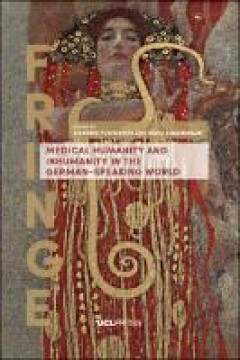
Medical humanity and inhumanity in the German-speaking world
Medical Humanity and Inhumanity in the German-Speaking World is the first volume dedicated to exploring the interface of medicine, the human and the humane in the German-speaking lands. The volume tracks the designation and making through medicine of the human and inhuman, and the humane and inhumane, from the Middle Ages to the present day. Eight individual chapters undertake explorations into…
- Edition
- -
- ISBN/ISSN
- 9781787357716
- Collation
- XI, 126 p
- Series Title
- Fringe
- Call Number
- 400 MED m
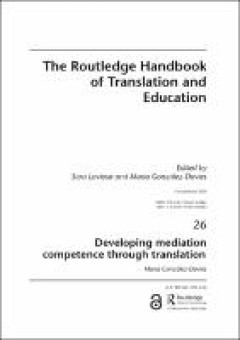
Chapter 25 Teacher agency in plurilingual learning contexts (Book chapter)
"The Routledge Handbook of Translation and Education will present the state of the art of the place and role of translation in educational contexts worldwide. It lays a sound foundation for the future interdisciplinary cooperation between Translation Studies and Educational Linguistics. By adopting a transdisciplinary perspective, the handbook will bring together the various fields of scholarly…
- Edition
- -
- ISBN/ISSN
- 9780815368434
- Collation
- 18 p.; 22 cm
- Series Title
- -
- Call Number
- 418.02 EST c

Sharing our knowledge: best practices for supporting English language learner…
To complete the course ECUR 415.3: Current Issues in EAL, students are required to submit a final paper that reflects their growing knowledge about English as an Additional Language (EAL). EAL is the term used in Saskatchewan to describe students who speak languages other than English and require adequate levels of English to be successful with the school curriculum. Most students enrolled i…
- Edition
- -
- ISBN/ISSN
- -
- Collation
- 182p. : ill.
- Series Title
- -
- Call Number
- 428.24 SHA s

Annotation, exploitation and evaluation of parallel corpora
Exchange between the translation studies and the computational linguistics communities has traditionally not been very intense. Among other things, this is reflected by the different views on parallel corpora. While computational linguistics does not always strictly pay attention to the translation direction (e.g. when translation rules are extracted from (sub)corpora which actually only consis…
- Edition
- -
- ISBN/ISSN
- 9783961100248
- Collation
- 522 p.; 22 cm.
- Series Title
- Translation and Multilingual Natural Language Processing
- Call Number
- 410 ANN a
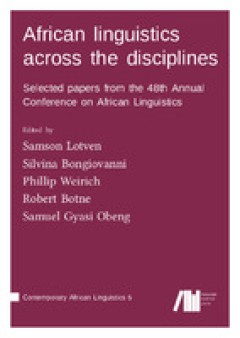
African linguistics across the disciplines
Since the hiring of its first Africanist linguist Carleton Hodge in 1964, Indiana University’s Department of Linguistics has had a strong and continuing presence in the study of African languages and linguistics through the work of its faculty and of its graduates on the faculties of many other universities. Research on African linguistics at IU has covered some of the major language groups s…
- Edition
- -
- ISBN/ISSN
- 9783961102136
- Collation
- 338 p.; 22 cm.
- Series Title
- -
- Call Number
- 410 AFR a
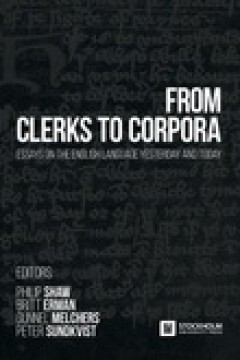
From clerks to corpora: essays on the English language yesterday and today
Why is the Isle of Dogs in the Thames called Isle of Dogs? Did King Canute’s men bring English usage back to Jutland? How can we find out where English speakers suck their breath in to give a short response? And what did the Brontës do about dialect and think about foreign languages? The answers are in this collection of empirical work on English past and present in honour of Nils-Lennart Jo…
- Edition
- -
- ISBN/ISSN
- 9789176350041
- Collation
- 391 p.; 22 cm.
- Series Title
- -
- Call Number
- 410 FRO f
 Computer Science, Information & General Works
Computer Science, Information & General Works  Philosophy & Psychology
Philosophy & Psychology  Religion
Religion  Social Sciences
Social Sciences  Language
Language  Pure Science
Pure Science  Applied Sciences
Applied Sciences  Art & Recreation
Art & Recreation  Literature
Literature  History & Geography
History & Geography